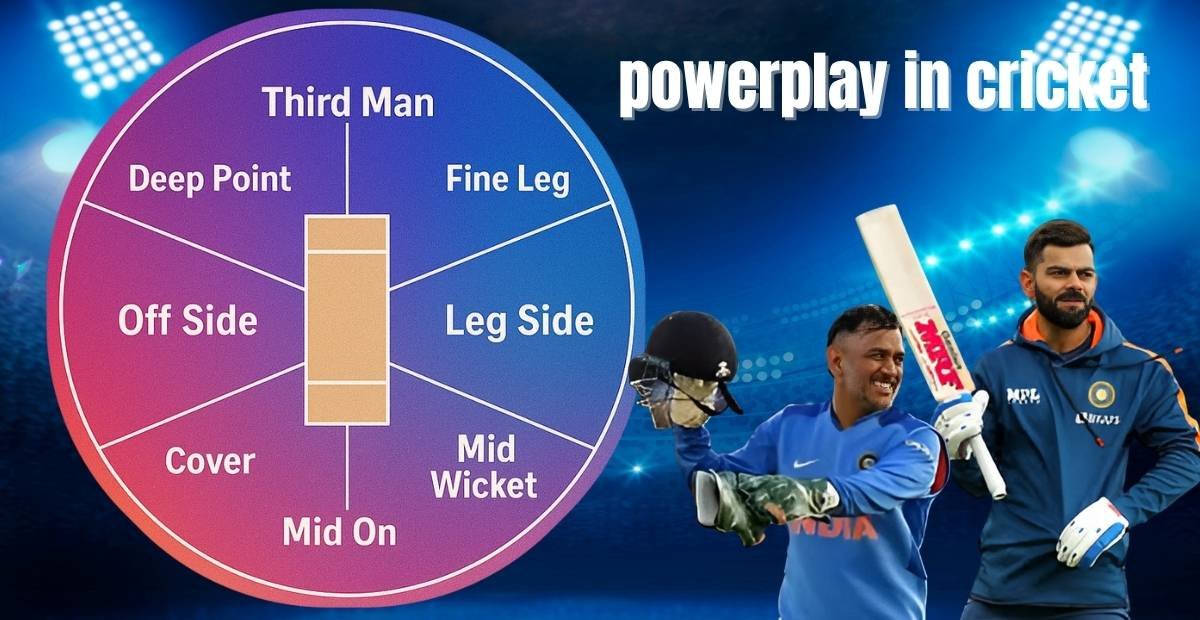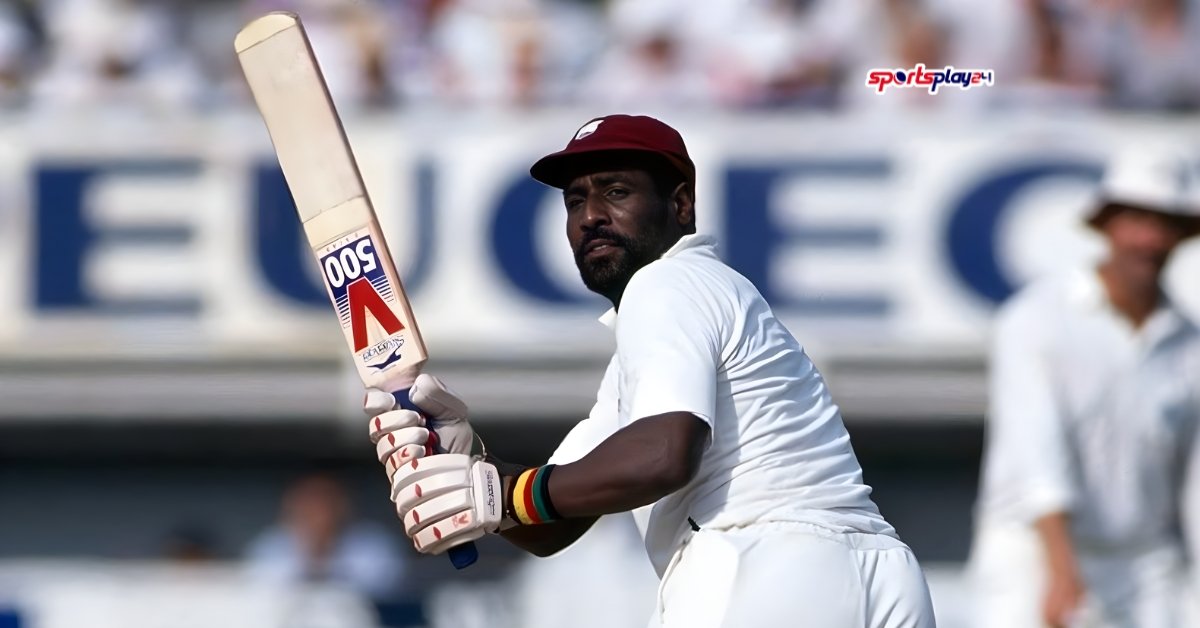Last updated on August 4th, 2025 at 08:18 am
Cricket is a game filled with strategy, rules, and special phases that add excitement and tactical depth. One such crucial phase is the Powerplay, a concept introduced to make limited-overs cricket more dynamic and engaging.
Whether you are a new fan trying to understand the game better or a seasoned follower wanting to refresh your knowledge, this blog will explain what a Powerplay in cricket is, why it exists, how it works, and its impact on the game.
Table of Contents
ToggleWhat Is a Powerplay in Cricket?
In limited-overs formats like One Day Internationals (ODIs) and Twenty20 (T20) cricket, the Powerplay refers to a specific period during the innings when certain fielding restrictions apply. These restrictions limit how many fielders the defending team can place outside the 30-yard circle, encouraging batsmen to play more aggressively and score runs quickly.
The Powerplay is designed to balance the contest between bat and ball, making the game more entertaining by creating opportunities for fast scoring and dynamic gameplay early in the innings.
Why Was the Powerplay Introduced?
The Powerplay concept was introduced to address several challenges in limited-overs cricket:
- Encourage Aggressive Batting: Traditional field placements often made it hard for batsmen to score freely, especially in the early overs. Powerplays encourage attacking shots by restricting defensive field setups.
- Increase Excitement: By limiting the number of fielders outside the inner circle, the game becomes faster-paced and more thrilling for spectators.
- Balance Between Bat and Ball: The restrictions create a tactical challenge for bowlers and captains, as they must strategize how to contain batsmen under limited fielding options.
- Enhance Viewer Experience: Especially with the rise of T20 cricket, powerplays ensure the game starts with an energetic burst, keeping fans engaged from the first ball.
How Does the Powerplay Work?
Powerplay in One Day Internationals (ODIs)
In ODIs (50 overs per side), the Powerplay is divided into three blocks:
- First Powerplay (Overs 1-10):
- Only two fielders are allowed outside the 30-yard circle.
- This encourages the batting team to capitalize on gaps in the field early on.
- Second Powerplay (Overs 11-40):
- Up to four fielders can be outside the circle.
- Fielding teams can place more players on the boundary, tightening the defence.
- Third Powerplay (Overs 41-50):
- Up to five fielders are allowed outside the circle.
- This allows for more defensive tactics as the innings nears its end.
Powerplay in Twenty20 (T20) Cricket
T20 cricket (20 overs per side) has a simpler Powerplay structure:
- Powerplay Overs (Overs 1-6):
- Only two fielders are allowed outside the 30-yard circle.
- Batsmen use this time to score quickly and set the tone for the innings.
- After Powerplay (Overs 7-20):
- Up to five fielders can be placed outside the circle.
- Teams adjust fielding to contain runs while bowling the remaining overs.
Fielding Restrictions During Powerplay
The key feature of Powerplays is the fielding restrictions, which impact how captains set their field and how bowlers deliver their overs.
- During the Powerplay, the fielding side can only have a limited number of players beyond the 30-yard circle (also known as the inner circle).
- The fewer the fielders on the boundary, the more gaps there are for batsmen to exploit.
- This compels bowlers to bowl with more precision and variation to prevent big shots.
Tactical Importance of the Powerplay
The Powerplay period is one of the most crucial phases of limited-overs cricket. Both teams strategize heavily around it:
For the Batting Team:
- Seize the Opportunity: Batsmen aim to score quickly during the Powerplay to maximize runs when fielding restrictions favour aggressive shots.
- Build Momentum: A strong Powerplay can set the foundation for a high team total or successful chase.
- Protect Key Batsmen: Teams may send their most aggressive players upfront or protect their anchors depending on conditions.
For the Fielding Team:
- Bowling Strategy: Bowlers often use yorker’s, slower balls, or wide lines to contain aggressive shots.
- Field Placement: Captains must balance between stopping boundaries and creating catching opportunities.
- Wicket Taking: Early wickets during the Powerplay can slow the batting side’s momentum significantly.
How Has the Powerplay Changed Over Time?
The Powerplay has evolved since its introduction:
- Originally called “mandatory powerplay”, all teams had to bowl their first 10 overs with fielding restrictions.
- Later, “batting powerplay” and “bowling powerplay” were introduced, giving teams more flexibility.
- Eventually, the International Cricket Council (ICC) standardized Powerplays into the current format for both ODIs and T20s, balancing entertainment with strategic depth.
Impact of Powerplay on Modern Cricket
Powerplays have revolutionized limited-overs cricket by:
- Encouraging innovative batting techniques like sweeps, ramps, and switch hits.
- Elevating the importance of death bowling skills and field placements.
- Increasing overall scoring rates and making cricket more viewer-friendly.
- Creating exciting moments early in the game, which keep fans glued to their screens.
Conclusion
A Powerplay in cricket is a specially regulated period that restricts field placements, allowing fewer fielders outside the 30-yard circle. Introduced to promote aggressive batting and increase the entertainment quotient, Powerplays have become an integral part of limited-overs formats like ODIs and T20s.
They force teams to strategize intensely, batting sides seek to exploit field restrictions for quick runs, while bowling sides try to counter with precise bowling and smart field setups. Understanding the Powerplay is essential for any cricket fan as it often shapes the course of a match, turning the tides in favor of the team that plays it better. As cricket continues to evolve, the Powerplay remains a thrilling highlight that balances skill, strategy, and excitement.

SportsPlay24 is powered by a passionate team of sports lovers who live and breathe the game. From Cricket to the NFL, our experts speak with one unified voice — driven by research, sharp insights, and an unshakeable love for sports. We go beyond headlines to bring you verified facts, intelligent analysis, and bold opinions that keep every fan ahead.






